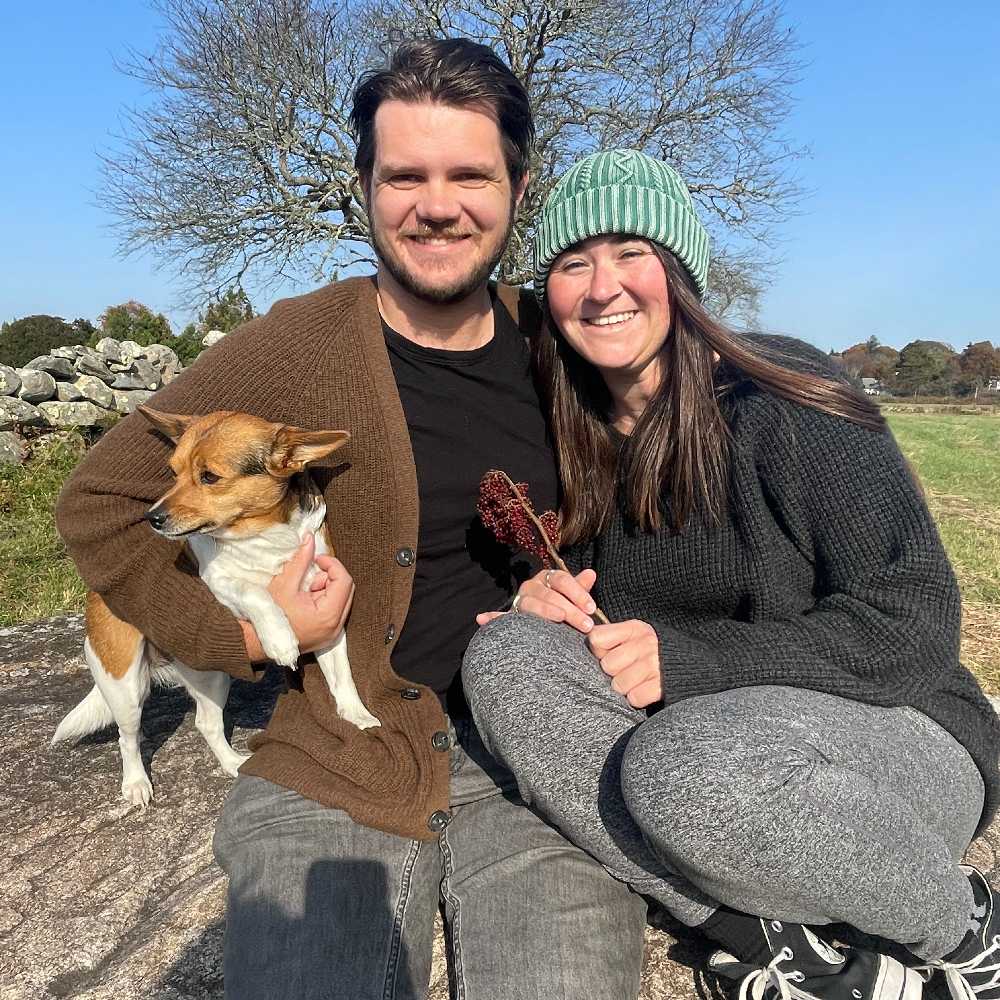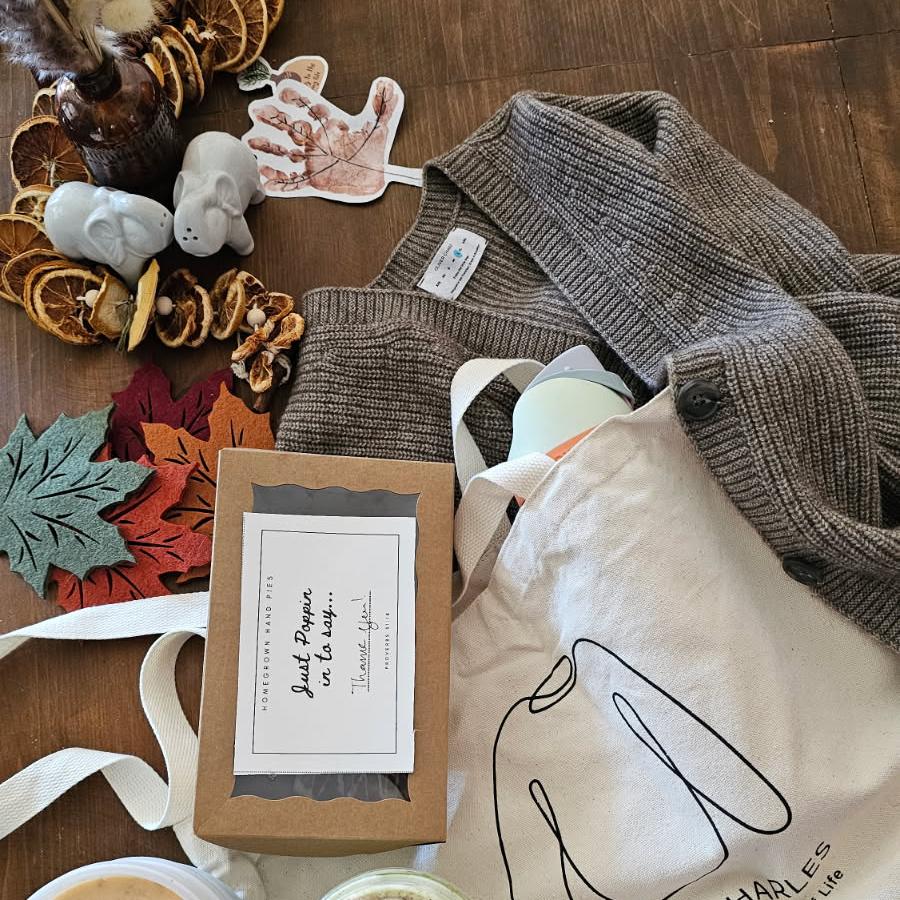Making Our New All-Season Socks
From Himalayan yak fiber to our North Carolina factory.
September 30, 2025
By Oliver Charles
What Makes One Sock Better Than Another?
Everyone has a favorite pair of socks. That one pair you reach for in your sock drawer each morning. For us, that perfect pair has always been made from natural wool.
Everyone is familiar with merino wool socks. They have been a staple of wardrobes worldwide. It's no surprise hundreds of companies have built their entire brand on merino wool socks.
If we've learned anything from years of making sweaters, it's that yak wool and merino wool are like peanut butter and jelly. Excellent on their own, but together they are truly something special.
We set out to create the perfect pair of socks using these two super fibers. A pair of socks that can truly do it all, one you could wear to work, on a mountain climb, or during a flight across the world.


What Makes Yak Wool Special?
Yak wool is versatile by evolution. Over thousands of years, yaks have evolved to survive and thrive in the unforgiving high-altitude climate of the Himalayas.
The Tibetan yak is the highest-dwelling wool-bearing mammal in the world, living comfortably at altitudes of 15,000ft to 20,000ft. Extreme conditions have forced these magnificent beasts to grow truly remarkable fibers.
The mighty yak's wool is known for its comfort, durability, and antimicrobial properties. Because of this, many consider yak wool to be the highest-performing wool in the world.
Yak's superior performance makes it the perfect material for a pair of socks that can truly do it all.

Why Yak Wool And Merino Wool Are Perfect For Socks?
Wool comes in many different forms, each with its own feel and function. Animals in the families of sheep, goat, yaks, camels, and even oxen produce a fiber broadly called "wool."
All wool has crimps, which are little natural waves (or crimps) in the fiber. These crimps are primarily responsible for the amazing utility of wool.
These special crimps are what give Yak and merino wool their superpowers. The crimps in wool are almost like a space-age invention from a team of NASA engineers. But in this case, it's all thanks to Mother Nature! This is what's responsible for the exceptional qualities of yak wool and merino wool.
Over millions of years, the crimps in the wool evolved in response to the environments in which the animals dwell. For Yak in particular, the harsh and ever-changing climates on the Himalayan shelf gave their wool superpowers. It needs to protect the animal in -40-degree weather and keep it cool during 70-degree days in summer.
The result is wool with a cadre of natural abilities perfect for socks.
- Thermoregulation: Temperature swings caused both yak wool and merino wool to develop hollow fibers in addition to their crimps. The combination creates dynamic air pockets that regulate temperature, insulating the animals in extreme cold and cooling them in extreme heat.
- Antimicrobial: Yak wool and merino wool are highly antimicrobial. As sweat is absorbed from the skin's surface, it travels outward and evaporates. In the process, the wool fibers actively bind and isolate bacteria, keeping your socks odor-free all day.
- Moisture-Wicking: Wool can absorb and retain up to 35% of its weight in moisture and still feel dry to the touch, which reduces sweat buildup and discourages bacterial growth. Yak fiber is particularly good at transporting moisture away from the skin 17% faster than pure merino wool.
- Durability: The crimps in wool are akin to a molecular coil spring. This allows wool fibers to be stretched up to 50% of their length when wet / 30% when dry, and still bounce back to their original shape when stress is released.
This otherworldly combination of natural abilities makes yak wool and merino wool ideal for socks. Together, they'll ensure your feet are comfortable, regardless of the temperature. They'll prevent odor even after a long day of work. They'll keep you dry all day, no matter how much you sweat. Finally, they are lightweight, durable, and won't lose their shape with wear after wear.


Our Socks Are Proudly Knit In North Carolina
With the perfect materials in hand and years of sweater-making know-how, but no sock-making knowledge, we needed some help. Luckily for us, the sock-knitting industry in the US is one of the few domestic textile industries that continues to thrive.
There are between 100 and 300 manufacturers currently operating in the US, many of which have been around since the early 1900s. After interviewing and making samples with about 10, we found a manufacturer that understood our mission and just so happened to specialize in high-performance wool socks.
Located in North Carolina, they are one of the nation's leading hosiery manufacturers, producing socks for many of the world's most well-known brands, including, but not limited to, Oliver Charles.
Sock knitting is not a new concept, and standard manufacturing practices are plentiful; however, we needed a factory that was at the forefront of the industry, with a focus on sustainability and cutting-edge technology.
The factory we found goes above and beyond on both fronts. They operate a highly automated facility with water reclamation programs and a commitment to recycling manufacturing waste. Not only that they maintain three key certifications.
- WRAP Certified: Worldwide Responsible Accredited Production (WRAP) certification, an independent program that certifies ethical, humane, and lawful manufacturing practices in the apparel, footwear, and sewn products industries
- GMP Certified: Which means a manufacturing facility has been audited and verified by a third party to comply with Good Manufacturing Practices, which are systems ensuring commitment to quality control, proper documentation, and sanitation
- HIGG Certified: Which refers to the use of tools from the Higg Index, a widely used standard for measuring and verifying environmental and social sustainability in the apparel, footwear, and textile industries


How Oliver Charles Socks Are Made
Making socks is surprisingly similar to 3D-knitting sweaters. The machines used to knit socks perform many of the same functions. Whether producing basic athletic socks or complex medical compression hosiery, their core logic follows the sequence of "yarn feeding→knitting→post-processing.
Sock knitting machines are specialized circular knitting machines designed to produce hosiery and socks of specific sizes, shapes, and performance standards.
How The Sock Knitting Machine Works
The knitting process begins with yarn supplied from a creel. Yarns pass through guides, stop-motion controls, and tension devices before reaching the knitting elements. The critical action happens at the machine's center, where needles form loops. In circular weft knitting, needles work in sequence around the cylinder to create a continuous tube of fabric.
- Cylinder: Holds vertical needles that make all the stitches.
- Needles & Sinkers: Carry out the loop-forming process.
- Dial & Jacks: Assist with transferring loops, shaping, and welt formation.
Needle Cycle
Each needle repeats a cycle: form a new loop, pull it through the previous loop, release the old loop, and tighten the new one to the correct length. Adjusting this cycle allows manufacturers to control texture, fit, and performance.

Sock Structure
Most socks share standard parts: welt, leg, heel, foot, and toe. Each section can be engineered for durability, comfort, or style.
- Welt: The starting edge that prevents unraveling and ensures fit. Using the dial, fabric is held until enough rows are formed, then transferred back to the needles.
- Heel Pocket: Extra fabric is knitted into the heel area to create a shaped pocket for a better fit.
- Toe Pocket: Similar shaping is done at the toe. The seam is often placed on top of the toes for greater comfort.
- Cushioning: Terry loops may be added to the sole for padding and moisture management.
- Reinforcement: Extra yarn is inserted into high-wear areas, such as the heel and sole.

Design & Effects
Patterning and texture are determined by cost, function, and style.
- Patterning: Basic socks use single jersey stitches with stretch yarn in the leg to help them stay up. Advanced machines allow for more complex designs.
- Texture Effects: Different yarns, stitches (tuck, float), or needle transfers can create varied textures, from smooth to highly textured.
Boarding
After knitting, socks are shaped and pressed in a process called boarding. Socks are placed on forms and treated with steam, heat, and pressure. This sets the shape, improves appearance, and can reduce shrinkage.

A History of Oliver Charles Socks
Our new All-Season Yak Merino Crew socks will be our 4th line of socks. We've been making socks for just over two years now and have gained a lot of knowledge about the process.
Our first pair of socks was mostly cotton with a hint of Yak Wool. They were fantastic and worn frequently by the Oliver Charles team and band of loyal customers. As beloved as those socks were, we knew we needed more yak wool, as that's what made them special in the first place. So we discontinued them (for now) and focused on the yak wool.

The 2nd Pair Was Made From 100% Yak Wool
The 1st pair was a thicker, chunkier winter sock, and wearing them felt like walking on a cloud. However, they had a significant flaw. They would wear out rather quickly if worn too often. We therefore discontinued those and returned to the drawing board to develop a stronger yak wool sock.

The 3rd Pair Was Made With SeaCell
The 3rd pair of socks we released over the summer was a total diversion of yak wool and was made from another staple material of ours, SeaCell. These socks have been a massive hit and perform incredibly well. In fact, an Oliver Charles team member recently completed a half iron wearing them.

Our New Socks Are Made With Yak Wool And Merino
Now on to our 4th pair of socks, a true all-season sock. Made from a blend of yak and merino wool, they will get the job done, whether you're hiking, traveling the globe, heading into the office, or just lounging around.
The New 100% Yak Wool Socks
Finally, our 5th pair of socks will be our new and improved 100% Yak Wool Winter Socks, coming soon. We've sourced new yarn and redesigned the sock using new machines for maximum durability and comfort.
Sock FAQs
Can I wash my Wool Socks?
Wool socks stay fresh longer than cotton or synthetic ones because wool naturally resists odor and breathes, keeping feet cool and dry. That means fewer washes, lighter packing when traveling, and more comfort during exercise. Often, simply airing them overnight is enough to wear them again the next day. When it is time to wash, treat them like other wool garments: turn them inside out, use a wool or delicate cycle with cold water, and wash with a gentle, Woolmark-approved detergent.
What size are the socks?
Your shoe size typically determines the appropriate sock size. Our socks are standard size or one size fits all. They will be most comfortable for shoe sizes ranging from 8 to 13 for men and 7 to 12 for women.
Where does the wool come from?
Our yak wool comes from the Tibetan Plateau, where it is known as khullu, referring to the hair around the neck and belly that the yaks shed each spring.
If you believe that every good wardrobe starts with owning less and owning better, consider buying yourself an OLIVER CHARLES sweater.
Shop NowPacking A Capsule Wardrobe For Travel
Testing the packability of the Oliver Charles All-Season Quarter Zip.
Read moreA Perfect Fall Day In My 100% Yak Wool Cardigan
The sweater’s pockets were perfect for storing dog treats on my walk, making me new furry friends.
Read more7 Day Challenge: One Yak Wool Vest Simplified My Entire Week
An honest review of the Cardigan Vest from a busy and pregnant toddler mom.
Read more



